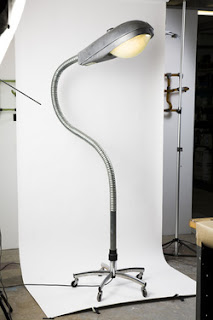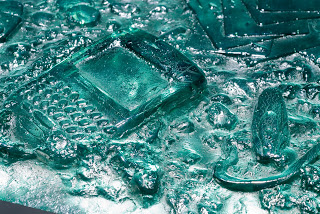>
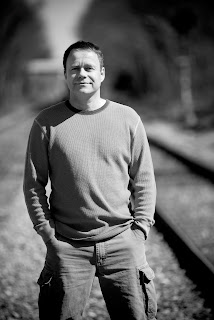
In honor of Earth Day, today’s artist profile is about eco-artist Erwin Timmers.
Erwin has become one of the area’s leading “green artists”. Recycling, waste, the environment and how they relate to society are recurring themes in his work – all of which he blames on his Dutch heritage. Erwin’s main medium is one of the least recycled building materials; float glass or window glass, and he has had to develop new techniques to work with this material.
Originally from Amsterdam, Erwin Timmers moved to California, graduating from Santa Monica College for Design Art and Architecture in 1995. Erwin’s artwork and sculpture has always incorporated recycled materials, and often integrated lighting elements. In 1999 he came to the Washington DC area and along with a new home came a new passion: Glass – creating the perfect marriage of metal and light. Combining this with found and recycled metal, his work carries strong environmental themes.
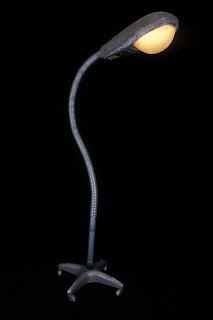
“Mr Cobrahead”, recycled materials, cast recycled glass
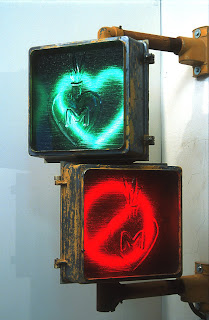
“Love Me, Love Me Not”, recycled steel, cast recycled glass, neon
Seeking to further his knowledge on using recycled glass, Erwin soon found there were few local options that taught glass techniques and recycled glass processes. And with little information available, Erwin became a pioneer in the field, developing his own kiln schedules. Fate would have it that he met up with Tim Tate, who was then starting the foundations for a glass school in Washington, DC. With his experimental approach and his easygoing, accessible teaching attitude, Erwin and Tim started the Washington Glass School in 2001. Erwin developed a number of courses that integrate his love of the materials and his environmental philosophies. His sustainable design knowledge has been sought by other glass schools, and besides courses here at the Washington Glass School, he has been teaching across the country, spreading the word about eco-friendly art.

Erwin Timmers chats with Italian glass Maestro Lino Tagliapietra.
Erwin has also become a leading consultant in LEED Certified artwork. He has received multiple public art commissions and is also featured in numerous private collections. The EPA had commissioned Erwin and the Washington Glass Studio to create an educational sculpture for the courtyard at the EPA’s Washington, DC headquarters.
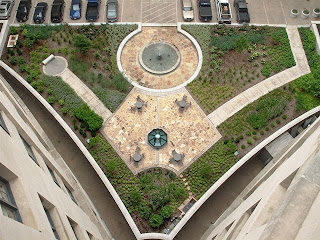
Low-Impact Demonstration Project, Ariel Rios Courtyard, Washington, DC. Quinn Evans Architects, John Shorb Landscaping
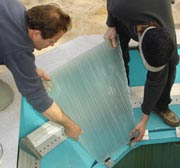
Erwin Timmers and Evan Morgan installing recycled glass panels.
Recently completed architectural projects include recycled glass works for Prince George’s County Courthouse and for Fox Architects and he is currently working on an eco-friendly project for the new Safeway in Bethesda, MD. Erwin’s expertise in the field of environmental art is sought out by the media, with interviews on local news stations, including this video where Erwin’s demonstration of tempered glass did not go quite as planned. The Washington Post Magazine has just interviewed Erwin for an upcoming article on recycling, scheduled to come out this June. His artwork is featured in several books, notably “Art Glass Today” by Jeffrey Snyder and “Ideas for Creative Reuse” by Garth Johnson. Two more books that include work by Erwin are due out this Spring/Summer.
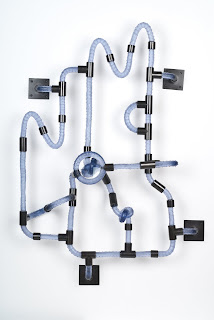
“Self Scrutiny”, cast recyled glass
photos: Anything Photographic
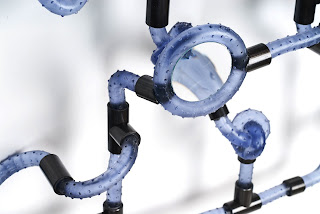
“Self Scrutiny” detail
Erwin’s environmental focused artwork has found an audience, from Miami International Art Fair to local and regional art gallery shows, including and upcoming engagement at Project 4 Gallery this summer. His work showcases the possibility and beauty of recycled material, while encouraging the viewer to consider his or her environmental impact.
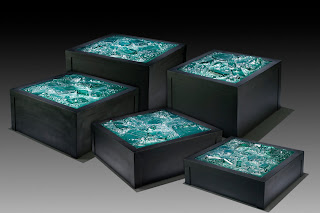
“What We Leave Behind” cast recycled glass, steel.
Using glass salvaged from a Virginia office building refurbishment, disposable technology and ephemera from recent decades are expressed as though discovered from a future archaeological dig.

























